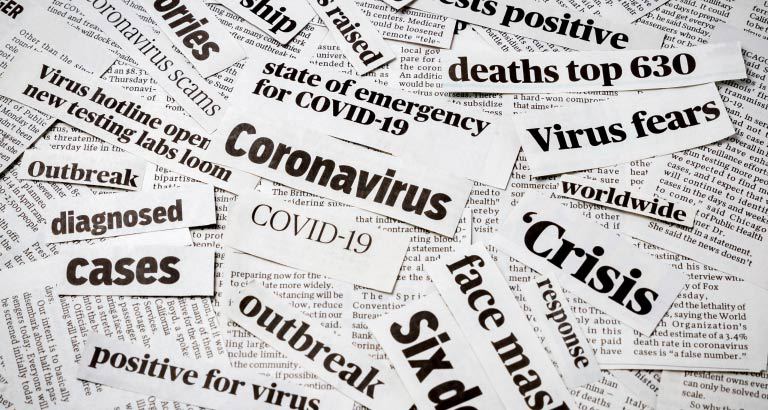Research shows excess deaths of COVID-19 exceed reports by 20%

Valid counts of deaths and what people died from are critical inputs for setting public health priorities. During the COVID-19 pandemic, the importance of data from death certificates has come into stark view. This data has been used to track the progression of the pandemic, to forecast the spread of the disease and its consequences, and to evaluate the effectiveness of various state policy measures and non-pharmaceutical interventions. Despite their utility, official COVID-19 death tallies only provide a partial view of the mortality burden associated with the pandemic.
Factors leading to underreported COVID-19 deaths
A constellation of factors, including severe testing shortages, overwhelmed hospitals, and a lack of familiarity with the clinical manifestations of the COVID-19 disease has likely led to significant underreporting of COVID-19 on death certificates, especially early in the pandemic. Official COVID-19 death tallies also fail to capture the pandemic’s profound social and economic consequences, including interruptions or delays in receiving health care, loss of employment, evictions, and social isolation and loneliness. Compounding these issues, there is no federal oversight of cause of death certification in the United States, and procedures vary widely across counties and states, complicating efforts to make geographic comparisons. While some states rely on a state medical examiner to oversee cause of death assignments, other areas rely on local coroners, who are often understaffed and may lack medical training.
Existing estimates of excess deaths during the COVID-19 pandemic suggest that COVID-related deaths exceeded the official COVID-19 death tallies by 20% or greater for the US as a whole in 2020.
Given the many factors that complicate the use of official COVID-19 death tallies for tracking the course of the pandemic, excess deaths have emerged as a useful alternative metric of the pandemic’s mortality impact. Excess deaths are defined as the number of deaths that occur in excess of what would have been expected in a particular time and place given historical mortality trends. Because this metric relies only on all-cause mortality patterns and does not make use of information on the cause of death, it is not affected by any potential underreporting of COVID-19 on the death certificate. It’s also able to capture any increases in deaths that occurred as a result of the indirect effects of the pandemic.
Estimating proper COVID-19 death numbers
Existing estimates of excess deaths during the COVID-19 pandemic suggest that COVID-related deaths exceeded the official COVID-19 death tallies by 20% or greater for the US as a whole in 2020. Estimates of excess deaths for US states reveal geographic differences in the extent to which the pandemic’s impact is captured by COVID-19 tallies, with some states having only small discrepancies (Massachusetts), while other states have substantial discrepancies (Mississippi).
Although we have learned a lot from previous studies of excess deaths, most have relied on state and national level data, which may obscure the uneven impact of the COVID-19 pandemic on local communities. In recent months, my research team has launched a new initiative to track patterns of excess mortality across more than 3,100 counties in the US. Our work is revealing significant variations in the pandemic’s direct and indirect consequences that are hidden from view when examining data by state. As part of this initiative, we plan to launch an interactive dashboard to allow members of the public to interact with our county-level excess mortality estimates. By providing a more complete picture of the pandemic across local areas, it may motivate more rapid uptake of COVID-19 vaccines and continued safety precautions. This information will help inform population health policy measures and resource allocation decisions by highlighting communities most disproportionately affected by the pandemic.
If you are interested in learning more and potentially collaborating on this dashboard, please see our opportunities to collaborate page.

Andrew C. Stokes, PhD is an Assistant Professor in the Department of Global Health at the Boston University School of Public Health. His research applies the analytic tools of demography to population health, with a focus on social determinants of health and health disparities across the life course. Dr. Stokes received his PhD in Demography and Sociology from the University of Pennsylvania.



